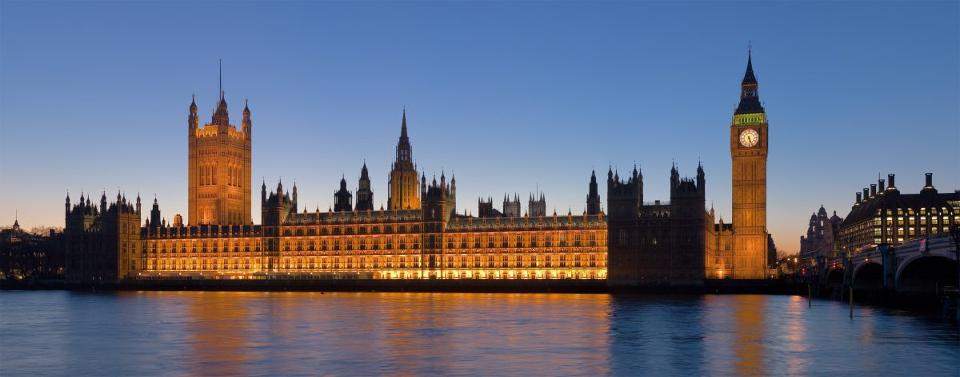

The United Kingdom (UK) is one of the most advanced countries in the world, tied with Sweden for 14th place in a United Nations’ Human Development Report issued in 2015. As one would expect in a highly developed country, the internet plays an important role in the lives of the UK’s citizens. An OECD report ranks the UK 5th in the world in total fixed broadband subscriptions and 4th in total wireless subscriptions based on data from December 2015. On the basis of the above you might think internet access speeds in the UK would be quite good but a report by Speedtest indicates this isn’t the case at all.
The problem with internet access in the UK isn’t that no one has fast access, it’s that coverage is spotty and speeds can vary widely. For example, 54% of rural areas do not have 4G access and 48% have broadband access speeds below 10 Mbps (Megabits per second). These poor numbers refer to internet access while outdoors, connectivity declines when you go inside.

Credit: Diliff – Own work, CC BY 3.0/Wikimedia Commons
The problems are not restricted to rural areas. London, by a number of accounts the city with the highest population in Europe, is plagued with “not-spots” – areas that have no wireless, no fixed broadband or neither. Not-spots are even found in the city of Westminster, the area of London that includes Buckingham Palace, the Houses of Parliament and 10 Downing Street.
The great variability in internet access speeds in the UK means that care must be taken when examining the average speeds reported by Speedtest. Access to the internet in the UK depends on where you happen to be at the moment to a much greater extent than is likely to be the case in other highly-developed countries.
With that in mind, average fixed download speed in the UK from mid-April to mid-September 2016 was 40.12 Mbps download and 9.13 Mbps upload. For comparison purposes, Speedtest measured average download speed at 72.05 Mbps in Sweden and 54.97 Mbps in the US. Average upload speed in the US is 18.88 Mbps; Speedtest did not report average fixed broadband upload speeds for Sweden.
Average mobile speeds in the UK are 24.19 Mbps download and 10.03 Mbps upload. For comparison, average mobile download speeds are 27.82 Mbps in Sweden (Norway measures 44.03 Mbps) and 19.61 Mbps in the US. Average mobile upload speed in the US is 7.94 Mbps. The UK clearly outstrips the US in average mobile access speed. The comparatively poor showing of the US is even more striking when you take into account that more than half of rural UK does not have 4G access.
Fixed broadband service providers
It’s important to understand how Speedtest measured fixed broadband speeds before looking at the numbers in the table below. The country averages listed above are based on average speeds across all service levels from all service providers. When Speedtest broke out individual service providers, they only considered the top 10% of each provider’s recorded speeds. In other words, 90% of subscribers should expect speeds that are slower than the speeds reported by Speedtest.
| Fixed Broadband speeds measured in Mbps | ||
| Service provider | Download speed | Upload speed |
| Virgin Media | 161.33 | 12.31 |
| BT | 63.23 | 18.61 |
| PlusNet | 59.53 | 18.41 |
| TalkTalk | 37.57 | 14.71 |
| Sky | 36.27 | 9.61 |
As can be seen in the table, Virgin Media dominates UK fixed broadband providers with a fast 161.33 Mbps download speed although its 12.31 Mbps upload speed is bested by everyone except Sky. Virgin Media has 19% of the market share in fixed broadband in the UK. Market leader BT’s (48% market share) download speed of 63.23 Mbps is markedly slower than the top download speeds in all of the Nordic countries, the US, Canada and Mexico. Telecommunications giant Sky with 23% market share produces dismal download and upload speeds – on average – in London Sky provides its customers with a blistering 301.32 Mbps download speed.
Mobile service providers
Speedtest evaluates mobile service providers by measuring speeds on devices that are capable of connecting to a 4G network. This way of measuring could vastly inflate average UK mobile access speeds given that 54% of rural areas in the UK do not have 4G access. It is unknown how many people in these areas have 4G capable mobile devices even though they are unable to access a 4G network.
| Mobile speeds on LTE-capable devices measured in Mbps | ||
| Service Provider | Download speed | Upload speed |
| EE | 32.83 | 12.09 |
| 3 | 22.46 | 9.61 |
| Vodafone | 21.24 | 8.93 |
| O2 | 15.91 | 8.21 |
As can be seen in the table, EE is easily the best mobile service provider for both download and upload speeds. EE, which is a division of BT, is also the market share leader in the mobile carrier space. EE’s download speed is faster than the fastest speeds in the US, Canada, Mexico and all of the Nordic countries save Denmark and Norway. EE’s upload speed also beats the top speeds in the US, Canada, Mexico and all of the Nordic countries except Denmark, Norway and Finland.
It’s worth remembering that the numbers in the table may inflate average mobile speeds because they do not take into account people who use mobile devices that are not 4G capable and over half of the rural areas in the UK do not have 4G access. The good news for UK mobile users is that EE is working toward a goal of covering 95% of the UK with 4G by 2020.

Credit: Stux/Pixabay/Modified by Kevin Murnane
Internet access in the UK is a decidedly mixed bag. The fastest fixed broadband and mobile speeds are very good but are unavailable to most of the population. The UK ranks 30th in the world (18th in Europe) in average fixed broadband download speed and 67th in upload speed, and 32nd in the world (22nd in Europe) in averagemobile download speed and 40th in upload speed. Internet service providers are striving to correct the UK’s uneven internet access but with the uncertainty over Brexit it’s unknown how their efforts will play out.
Kevin Murnane covers science & tech for Forbes. You can find more of his writing about these and other topics at The Info Monkey and Tuned In To Cycling.
[Source:-Forbes]





